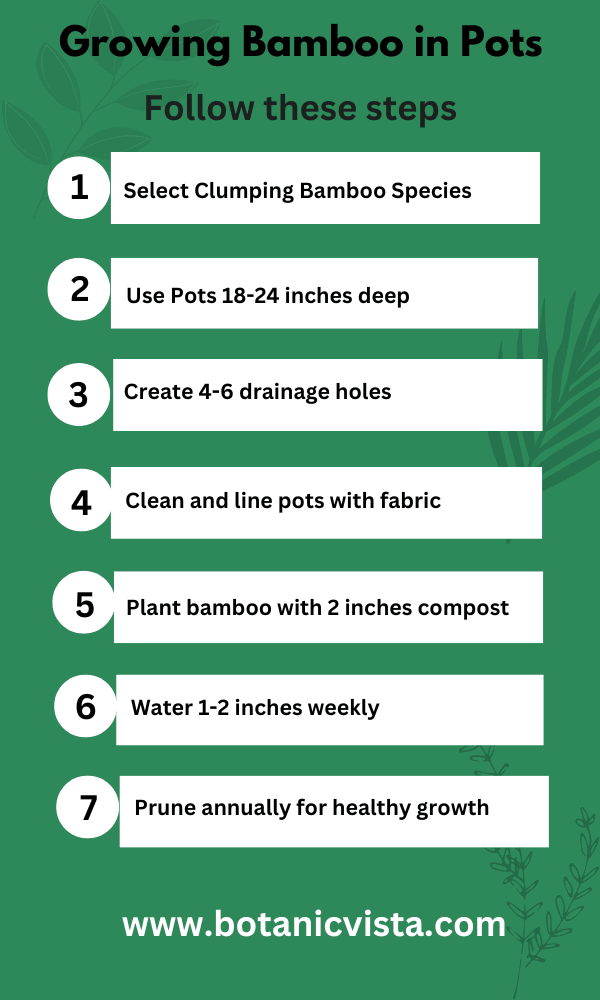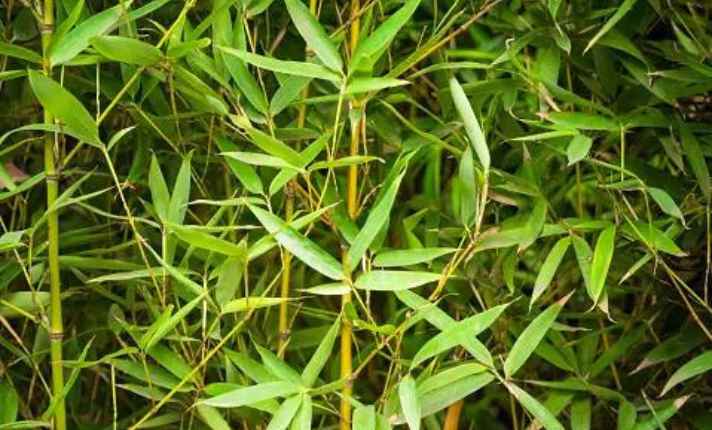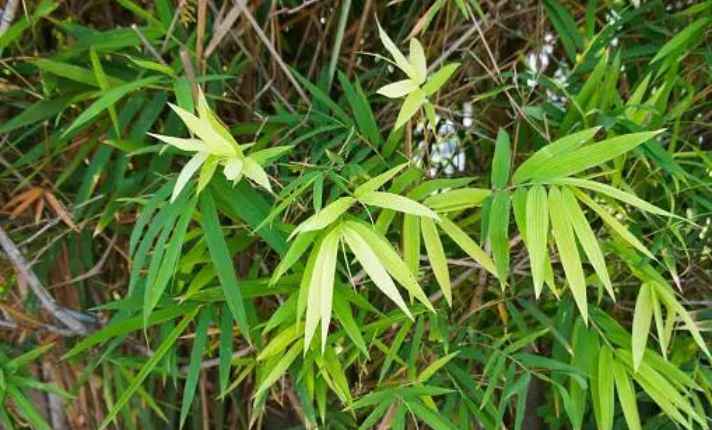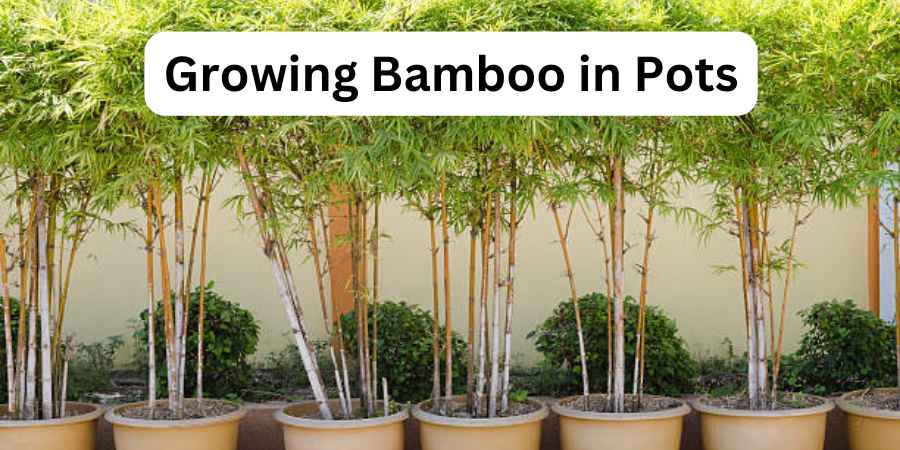Last Updated on July 2, 2025 by Jocelyn
Bamboo is an evergreen plant from the grass family that can grow well in pots and adds natural beauty to your garden or yard.
Some types, like Dendrocalamus sinicus, can grow up to 46 meters tall, but this guide focuses on types that are perfect for containers. Using pots helps control root spreading and makes bamboo easier to care for.
To grow bamboo in a pot, choose a clumping type, not the spreading kind. Use a large pot with good soil and drainage.
Place it in a sunny spot, water it often to keep the soil moist, and add fertilizer during the growing season. Every few years, move the bamboo to a bigger pot to help it stay healthy and strong.
In this article, we will learn about the best bamboo for pots, how to plant and care for it, and some tips to keep it looking great. Let’s get started!

Table of Contents
ToggleChoosing the Right Bamboo Species
Growing bamboo in pots allows you to enjoy this beautiful plant in your garden or on your patio effortlessly. There are two main categories of bamboo: clumping bamboo and running bamboo.
Each has unique characteristics that make them suitable for different purposes and spaces.
1. Clumping Bamboo Varieties
Clumping bamboo grows in tight, manageable clusters, ideal for garden borders. It spreads slowly, staying where you plant it. Perfect for creating privacy screens.
- Fargesia
Fargesia bamboo is perfect for containers and patios because of its manageable growth and tight clusters. This species is not invasive and is ideal for smaller spaces.
Its delicate foliage adds a tropical touch to any setting. Regular pruning and repotting are recommended to maintain its health and beauty. Use pots of at least ten gallons (38 L.) for optimal growth.
- Bambusa
Bambusa is another great option for clumping bamboo. It thrives in containers and can adapt to various climates. This bamboo is known for its variegated leaves, adding a unique aesthetic to your garden.
Ensure it gets adequate sunlight and occasional pruning to keep it looking its best. Larger pots, like twenty-five to thirty gallons (95-114 L.), are ideal.
- Thamnocalamus
Thamnocalamus is perfect for screening and can be grown in pots. It is also non-invasive, making it easier to control.
This bamboo adds a significant presence to your outdoor or indoor spaces. Regular watering and fertilizing help maintain its look. Wine barrels make excellent containers for these robust plants.
2. Running Bamboo Varieties
Running bamboo spreads quickly through underground rhizomes, covering large areas fast. It’s great for erosion control but needs barriers to contain its growth. Ideal for expansive, natural settings.
- Phyllostachys
Phyllostachys is a type of running bamboo known for its rapid and vigorous growth. It is perfect for outdoor screening.
Planting it in pots helps manage its spreading nature. Ensure it is pruned regularly to prevent it from becoming too aggressive. Larger containers, like twenty-five to thirty gallons (95-114 L.), are recommended.

- Pseudosasa japonica
Pseudosasa japonica is another running bamboo species. It grows quickly and is ideal for large containers. This bamboo requires regular pruning and care to keep it from becoming too aggressive.
Proper watering and sunlight are essential for its health. Wine barrels or even bigger pots work best for this vigorous grower.

Selecting and Preparing the Container
When growing bamboo in pots, choosing the right container is important. The container must be large enough to accommodate the vigorous root systems of bamboo and the material should be suited to your climate and aesthetic preferences.
Proper drainage is essential to prevent root rot and ensure the plant’s health.
1. Container Size and Depth
Choosing a large and deep container helps the roots spread and grow downwards. This prevents the bamboo from becoming root-bound and ensures it has plenty of room for development.
2. Material Types
Different materials have unique advantages and disadvantages. Terra cotta and ceramic are stable but can crack in cold weather. Wood offers good insulation but may rot if untreated, while plastic is lightweight and easy to move.
3. Drainage Holes
Drainage holes are crucial for preventing excess water from accumulating in the pot. Adding gravel or broken pottery at the bottom can enhance drainage and keep the roots healthy.
Once you’ve selected the ideal container, proper preparation is key. Cleaning the pot removes harmful residues, and lining it can protect and stabilize the soil.
Ensuring the container’s mobility and placing it in the right location will support your bamboo’s growth.
4. Cleaning the Pot
A clean pot is essential for healthy bamboo growth. Remove any deposits or remnants to create a fresh environment for your plant, reducing the risk of disease.
5. Lining
Lining the container with plastic can help retain soil and provide additional protection, especially for wooden containers. This step enhances the container’s stability.
6. Stability and Mobility
Adding wheels or a wheeled stand makes it easier to move the container. This is particularly useful for large pots, allowing you to reposition them as needed for optimal sunlight and protection.
7. Location
The placement of your container is crucial. Ensure it meets the light requirements of your bamboo species, whether they prefer full sun or partial shade. Proper placement will help your bamboo grow well.
Planting Bamboo in Pots
Growing bamboo in pots adds a touch of green to any space without the risk of spreading. Bamboo adapts well to pots and needs proper care.
With the right soil and regular care, you can enjoy healthy bamboo plants all year. Here are the steps to ensure your bamboo grows well.
1. Choosing the Right Pot and Soil
- When picking a pot for your bamboo, choose one that’s big enough for the roots and has good drainage holes to prevent waterlogged soil.
- For the potting mix, a blend of loamy soil, compost, and perlite ensures better aeration and drainage.
2. Preparing the Bamboo Plant
- Start by soaking the bamboo roots in water for a few hours to ensure proper hydration. This step is crucial for the plant’s initial recovery.
- Fill the pot with the prepared soil up to the rim. Place the bamboo in the center and gently pack the soil around the root ball to eliminate air pockets.
3. Supporting and Watering the Bamboo
- To help your bamboo stay upright as it grows tall, it’s helpful to stake the plant. Ensure the stake is sturdy and positioned correctly.
- Water the bamboo thoroughly after planting. Keep the soil moist but avoid overwatering to prevent root rot. Regularly monitor the soil moisture and adjust your watering schedule as needed.
4. Adding Nutrients and Care
- For the best growth, add organic compost and well-rotted manure to the soil. These provide essential nutrients.
- Regularly monitor the bamboo for signs of distress. If the plant becomes root-bound, consider re-potting it into a larger pot.
5. Seasonal Care and Maintenance
- During hot and dry seasons, increase the frequency of watering to keep the soil moist. In colder weather, ensure the plant is shaded and protected from frost.
- Keep your bamboo healthy by trimming dead or yellowing leaves. If it grows too tall, you may need to prune it back to maintain its size.
For more insights on growing in pots, check out my guides:
Bamboo Care in Pots
To ensure your potted bamboo remains healthy, follow these key care tips. This guide covers essential practices like proper sunlight, regular inspections, and balanced fertilization.
| Topic | Details |
| Sunlight | Place bamboo in indirect sunlight to prevent yellowing leaves. |
| Inspections | Regular checks to spot pests like aphids early. |
| Fertilizer | Use a slow-release fertilizer for balanced nutrients. |
| Pruning | Helps maintain shape and prevents the bamboo from becoming root-bound. |
| Watering | Consistent watering, avoiding waterlogged conditions. |
| Winter Protection | Wrap the pot in winter to protect roots from the cold. |
| Mulching | Helps retain moisture and keep the environment stable |
| Growth Issues | Check for stunted growth; replant if necessary. |
Creative Ideas for Bamboo in Pots
Bamboo in pots brings elegance and natural beauty to any space. In the living room, tall bamboo in the corners gives a fresh and vibrant look. Different varieties with unique cane colors and leaf variegations can be focal points.
Smaller bamboo plants create a spa-like retreat in the bathroom. On an office desk, bamboo provides a calming presence to reduce stress. Outdoor landscaping with bamboo offers privacy screens on patios or balconies.
In the garden, bamboo can enhance mixed borders or pathways and water features. Use symmetrical planters for an inviting entryway and combine bamboo with colorful annuals, perennials, and ornamental grasses for varied texture.
Bamboo’s versatility makes it an excellent choice for various decorative themes.
Effective Strategies for Pest and Disease Management
Regular care helps bamboo stay healthy and pest-free. Consistent watering and proper sunlight ensure strong growth.
By keeping the area clean and inspecting leaves regularly, you can prevent pests. Well-drained soil is crucial to avoid root rot and maintain your bamboo’s health.
| Strategy | Details |
| Regular Inspection | Weekly checks for pests, washing them off with water. |
| Soap Spray | Mild soap and water mixture to control pests. |
| Area Cleanliness | Avoid over-watering to prevent yellow leaves and weak roots. |
| Soil Check | Ensuring well-drained soil to prevent root rot. |
| Water Management | Avoiding over-watering to prevent yellow leaves and weak roots. |
| Sunlight Provision | Positioning the pot for morning sun and afternoon shade for balanced growth. |
FAQ’s
Q: Can Bamboo Go Outside in Summer?
A: Yes, bamboo can go outside in summer, especially in moderately warm areas and partial shade environments. It grows well with ample light and humidity, but in harsher summer climates, it needs relief from the intense afternoon sun.
Q: How Often Should I Water Bamboo in Pots?
A: In hot climates, water bamboo 3-5 times a week during summer. Use mulch to help retain moisture. In cold climates or winter, water every 7-10 days to keep the soil moist but not too wet.
Q: Do Bamboo Need Deep Pots?
A: Bamboo can grow in narrow but high-quality pots with good drainage. They need moderate potting soil and should be repotted every year to allow space for roots to grow. Make sure the pots have drainage holes to prevent waterlogging.
Q: Is Potted Bamboo Invasive?
A: Potted bamboo can be invasive if not managed properly, as some types, especially running bamboo, spread aggressively.
Choosing clumping varieties and using sturdy containers can help control its growth and prevent it from becoming invasive.
Q: What Soil Is Best for Bamboo in Pots?
A: To help bamboo grow well in pots, use well-draining potting mixes that are slightly acidic with a pH of 6.0 to 6.5. Make sure the soil allows the roots to spread freely and is not densely packed.
Conclusion
Growing bamboo in pots is a great way to have plants without a garden. Pots help control bamboo’s spread. Use a large pot with good drainage. Water regularly but don’t let it get soggy. Fertilize to keep it healthy. In winter, protect it from frost.
Always check the roots, and re-pot if needed. Growing potted bamboo at home is a smart choice. It fits small spaces and looks nice. Keep your bamboo happy by following these simple tips. Enjoy your green corner!

